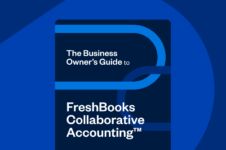You'll be surprised to learn who your high-value clients really are.

In the Fall of 2016, I attended a FinCon – a conference for the financial media community. While there, I participated in the freelancer marketplace, similar to a speed-dating event where freelance writers meet companies looking for their services.
I met quite a few companies there and ended up becoming a regular contributor for one. When it came time to purchase a ticket to FinCon for 2017, I started thinking:
- What was my quantifiable return on investment?
- I’d received many intangible benefits from attending the conference, but I’d spent roughly $200 on a ticket
- How much did I earn in real dollars from that $200 investment?
The answer was just an accounting report away. I ran a Payments Collected report on FreshBooks, the tool I was using, for that client for the past year. The report showed me I’d made nearly $20,000 from that client alone, representing a return on investment of 9,900%.
Needless to say, when I met up with that client again at FinCon, dinner was on me.
As it turns out, I’m not the only small business owner who uses cloud accounting tools to identify high-value clients. I heard of other business owners using reports to determine which clients bring in the most business, so they can go above and beyond.
Let’s take a look at a few ways a cloud accounting tool, like FreshBooks, can help you identify and keep your high-value clients.
Table of Contents
Payments Collected Report: Who Are Your Top Three Clients?
As I mentioned above, I used the Payments Collected report to find out how much I’d collected from a particular client in the past year. I also found out who my other top clients were last year.
Do you know who your top three clients are? Run the Payments Collected report, customizing the date range for the timeframe you want to analyze. You can focus on one client or include all clients.
If you want to look at all clients, the Payments Collected report will give you a list of every payment you collected for the year. You can sort this information by exporting the data to an Excel spreadsheet, sorting by client name, and adding sub-totals for each client.
The first time I ran this report, the results actually surprised me. Some of the clients I thought were the most profitable actually weren’t. They might pay me more per word or send me the occasional very lucrative project, but my most valuable clients weren’t the ones sending me the occasional flashy project. They were the ones giving me consistent, fairly priced work month over month.
Knowing who those top clients are, I can treat them like my VIPs.
When my inbox is overflowing, I’m sure to answer their emails faster, turn around their projects quicker, and prioritize their deadlines. Of course, I value all of my clients, but I can give a little extra TLC to the ones that make the most significant impact on my bottom line.
Payments Collected Report: Do You Need to Diversify Your Client Base?
With the same Payments Collected report mentioned above, I took a look at how much of my annual revenue came from my top four clients. Although I worked for 22 unique clients last year, about two-thirds of my income came from four clients.
On the one hand, that’s great! Many freelancers struggle to make sure they have enough work to pay the bills each month. With a stable of regular clients who pay me on time every month, I have it comparatively easy.
But on the other hand, what would happen if I lost one of those clients? If one of my top clients decides they no longer need my services, I could see a 10 to 20 percent drop in my income overnight.
How about you? How many clients make up the bulk of your annual income? What would you do if they no longer need your services? If losing one of your high-value clients would be a major blow to your business, you might consider putting aside a little more money into your emergency fund or diversifying your client base.
Accounts Aging Report: Who Are Your Ideal Clients?
If you’re looking for new clients, the information contained in your reports can help you identify your ideal target clients based on your existing clients.
Any business owner knows that all clients and prospects are not created equal. When I started freelance writing, I would take on just about any client that could pay me. As my business has grown, I’ve let some of those clients go.
The ones I let go of aren’t always the lowest paying clients. Sometimes they’re just the ones that are the most difficult to deal with or the ones that I have to keep sending reminders for past-due invoices.
Take a look at your Accounts Aging report. Do you have anything in the 90+ Days column? Are the same clients in that column month after month, year after year?
Perhaps those clients are a joy to work with and you don’t mind waiting three months or more to get paid, but if they’re difficult clients that are also slow to pay, do you really need them? What new opportunities would you have time for if you weren’t spending hours chasing down invoices?
There may be other factors to consider, but the important thing is to understand your business, understand your clients, and know what aspects of your business are profitable and which are more effort than they’re worth.
What Advantage Do You Have for Negotiations?
Most of my clients pay me by the word of a fixed rate per project, but I have one client that pays me an hourly rate. In 2017, I’d promised them a certain number of hours every week. They occasionally mentioned giving them more hours, but I felt as though I was already at capacity.
When it came time to negotiate our 2018 contract, my client again mentioned working more hours for them. But I’d recently analyzed by revenue per customer. Since I’m already at capacity, working more hours for them at an hourly rate meant I would have to turn down other fixed-fee projects and lose money.
I was nervous about being that frank with them, but it paid off. They understood exactly where I was coming from and we were actually able to negotiate a new contract that pays me a fixed fee per project instead of an hourly rate. It works out better for me and my client is happy, too.
Having honest fee conversations with clients can sometimes be uncomfortable, but it’s a necessary part of running a successful business. When you know your numbers, you know when you’re getting a good deal and when you’d be losing money. Information is negotiating power. Use it.
In Conclusion
We’ve all heard the old adage, “work smarter, not harder.” For small business owners, the “work smarter” half of the equation comes from a better understanding of the data you have.
So use your cloud accounting reports to look at your clients and look at the results your existing work generates. You’ll be able to keep your best clients happy, attract profitable new ones, and make smarter business decisions.

Written by Janet Berry-Johnson, CPA and Freelance Contributor
Posted on April 19, 2018

 3 Reports You Can’t Live Without at Tax Time
3 Reports You Can’t Live Without at Tax Time Everything You Need to Know About Managing Bad Clients
Everything You Need to Know About Managing Bad Clients New: Easily Track Every Project’s Performance
New: Easily Track Every Project’s Performance





